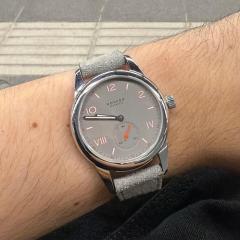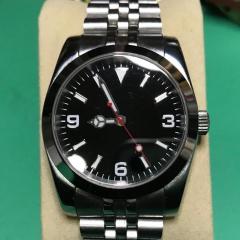Tudor c. 390; Rebanking, low amplitude
-
Recently Browsing
- No registered users viewing this page.
-
Topics
-
Posts
-
Never ask anyone into watchmaking what to keep! As Andy points out we probably all have an aversion to getting rid of potentially “useful “ things 😂 natural born hoarders and tool collectors, every single one of us 🤪🤣 Tom
-
I'd say just keep everything but I'm probably classed as a hoarder. If you come to work on either of these movements again the parts could come in handy.
-
So this is my very first project I have decided to tackle and my first posting. If I do anything incorrectly, please let me know and I shall correct it asap. So i decided to fix some old watches i had sitting in a box. I believe this watch is the very first watch I purchased myself, at the Victorinox store in the Garden state mall NJ. If I can fix it , i will donate it to my church to help disadvantaged youth dress for interviews and find jobs. The movement is a Ronda 515 1 jewel. I need a crown and tube for this case. The stem seems as it is intact. The crown is required to put the stem in second position , allowing me to remove the stem. I searched All the mechanical drawing, but i cant find the crown type. Is there a special tool required to remove the tube and is it complicated? the crystal is cracked and heavily scratched. so I will need to replace it How do I determine how to remove the crystal and what type of crystal is it, so I can try to find a replacement Definitely will need a cleaning, so once i figure out best oil solution I will do that. I am curious why the watch doesn't say Victorinox on it? Thanks in advance for any advice or suggestions.
-
Rodico on tweezers.





Recommended Posts
Join the conversation
You can post now and register later. If you have an account, sign in now to post with your account.
Note: Your post will require moderator approval before it will be visible.